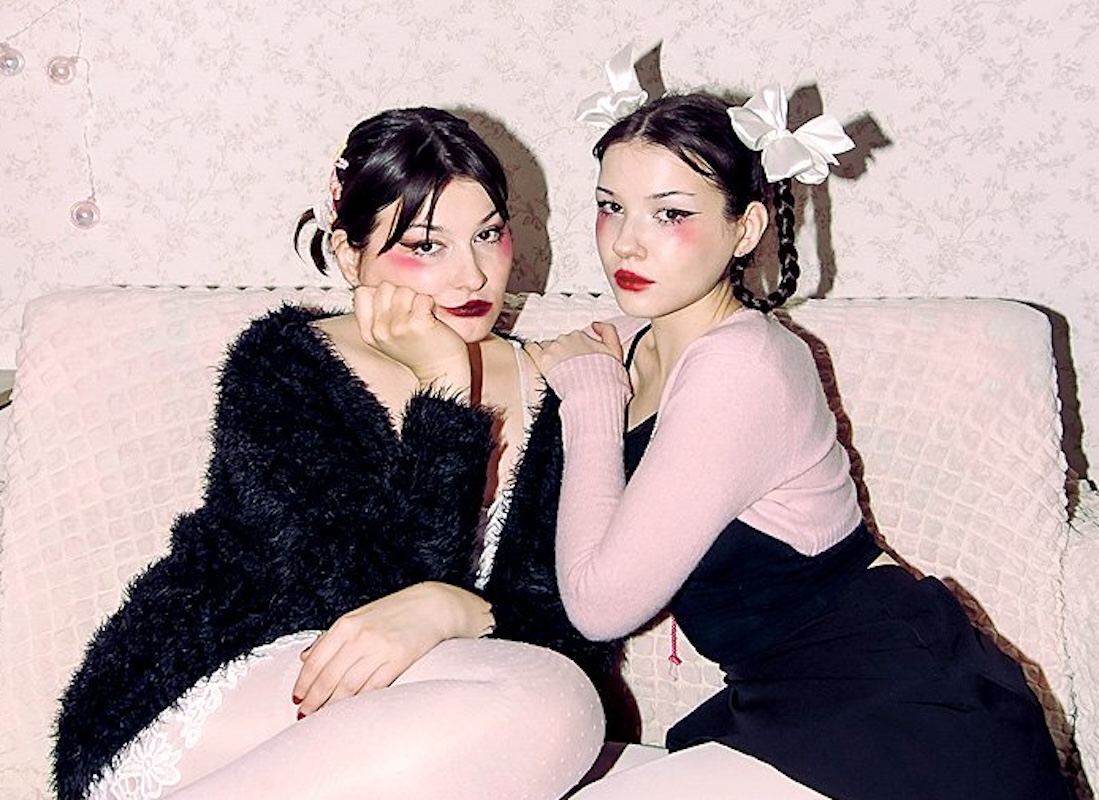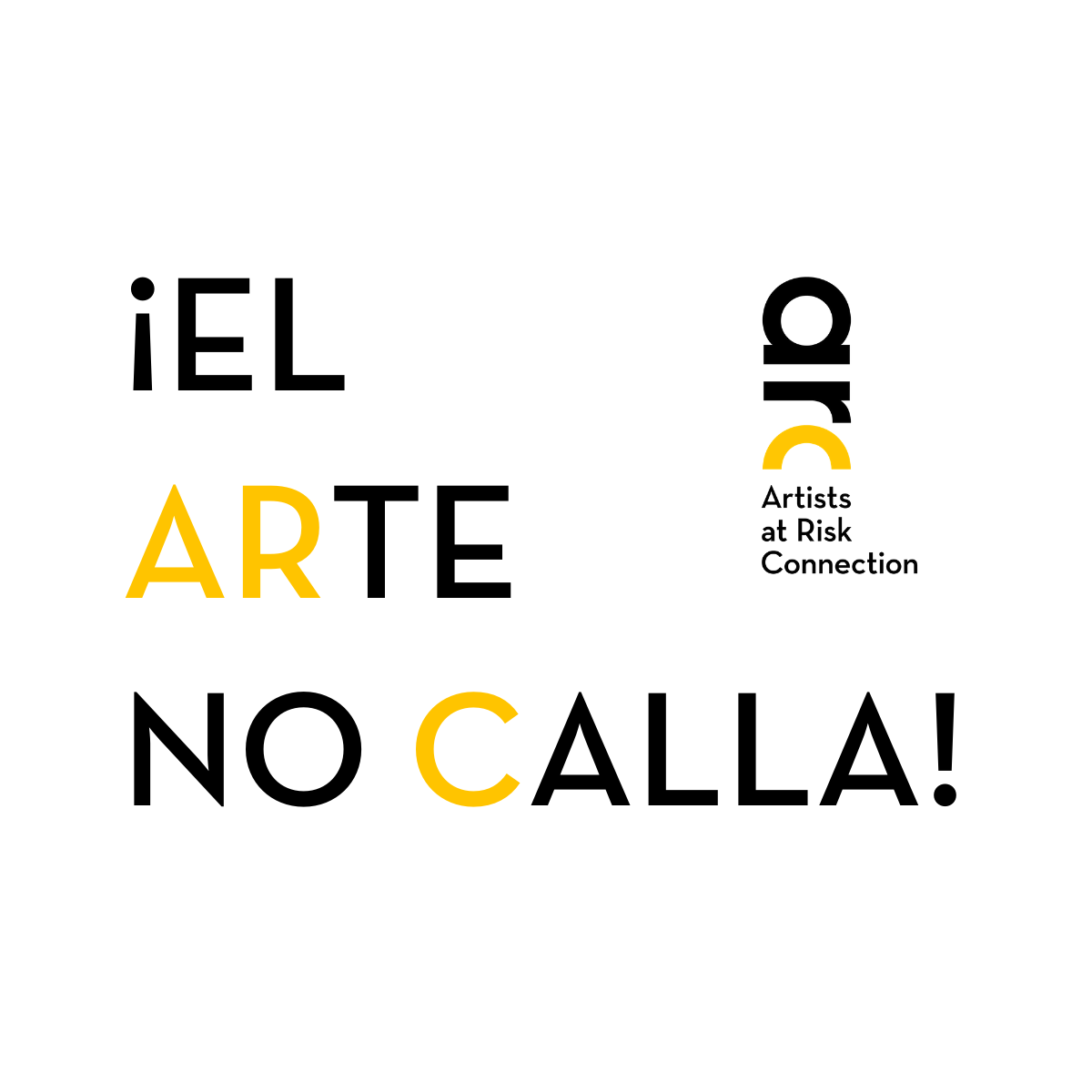Malyshki 18:22
(‘Babes 18:22’)
Multidisciplinary
Russia

Malyshki 18:22 is a creative duo consisting of sisters and artists Nika and Aksinya Sarycheva from Siberia. In their artistic practice, the duo operates at the intersection of the imagined and the real, exploring themes of everyday life, human vulnerability, femininity, inner childhood, and sisterhood. They examine life through the lens of the games they devised in childhood, overlaying imaginary worlds onto harsh realities and revealing contemporary issues through the practice of “beauty vandalism.”
The artists work with a variety of media, including graphics, painting, ready-made objects, textile, video, performance, and urban intervention. Their works are characterized by contrasts—juxtaposing soft pinks and tender imagery with unsettling and eerie themes.
Founders of the bedroom gallery “Malenkaya” and co-founders of “ars kotelnaya,” Malyshki 18:22 have been awarded grants from the Garage Museum of Contemporary Art (2021-22) for artists working in contemporary art, as well as receiving grants from the GES-2 House of Culture on two occasions. They currently live and work in Tomsk.
“We feel like princesses of the swamps in a voiceless Siberia.”
– Malyshki 18:22
ARC Interview with Malyshki 18:22
What is it like to be an artist in “our” time? How is it reflected in your art?
Aksinya: We live in a very tough time and we feel it very keenly. We are not just siblings, we are very close sisters, we are sisters who are constantly in dialog with each other. We are sisters who are inseparable – in art and in life.
So this is a time we feel like the worst thing ever – the discord between sisters.
Nika: Within that time, we feel like this. Imagine if the two of us are running holding hands in pitch darkness down a very bad road. We don’t know where it’s going, but all we can do is run down it. There is mud, pits and bumps under our feet, branches scratch us from the side, we take turns falling and taking turns dragging each other, gasping and running with all our might. And somewhere there is a light in the distance.
A: I hope that this light is not the lantern of a train rushing towards us. This light is some kind of hope that we still have.
N: We recently had an exhibition called “What’s in my purse”. The purse was a metaphor for society. We were working with the image of gatherers. There are hunters – belligerent, powerful, tough, and there are gatherers – a feminine image, the main characteristic of which is its ability and desire to pick, save, and keep. And among the different objects in this exhibition was the object “Pandora’s bag”. According to the myth, at the bottom of Pandora’s box just lay hope. This light is that hope.
How do you see the future of your work? What creative strategies do artists in Russia have now?
N: For a long time we had a period of survival. It was impossible to plan far away: our main goal was formulated simply – to pay the monthly rent.
We are very aware of the world we live in. It is a world where the past is very scary to look at, so we try not to look back, and the future is very disturbing, so we try not to look there. We were recently reminiscing about the Soviet children’s cartoon about Losharik. Do you remember? It was such a strange creature – a horse made of marbles.He’d break up into these balls and then he’d come back together as a whole creature.
And we talked about the fact that it is a very good ability for life in our time – to be able to exist in the form of a chaotic structure. What else is possible but such a magical existence? That’s the only thing that magic can do.
Aksinya:
It’s as if we are living in a ghost of the USSR, inside some decayed creature. Or maybe we are ghosts who wander around some old house or castle.
The artists with whom our organization works in the main have had to leave under the pressure of the authorities, how do you feel it from Russia? Has the market, the field, the circle become smaller?
Aksinya: There are fewer people. The art community is devastated, a lot of people we know have left – from Siberia, where we live, and from Moscow. Nobody left who could come to our birthday parties. There are only two of us. Like the two marbles that are left of Losharik. We often think about what will fill this empty artistic space.
Often it is filled with spam, as we call it. Art that doesn’t aim to draw attention to the problems, to make a statement, but rather to distract, to fog it up.
Nika: We didn’t even have the thought of leaving. And there was no opportunity. But the most important thing is that our artistic practice is very much connected to the area, to Siberia. It seems that our art is more important in Russia.
And we were well aware of where the danger could come from. In 2022, we had a denunciation written against us.I was still studying at the university, at the graphic arts faculty, we were already becoming popular, and some man wrote a denunciation about us to the university administration. It was not a denunciation about any specific artwork, and we are not engaged in activism. But he wrote that university authorities should take a closer look at us, watch us closely, because as he wrote we were doing something suspicious. Contemporary art itself is attracting attention.
Aksinya: Our language hasn’t changed much. Censorship doesn’t allow us to express ourselves directly, and we never did, metaphor has always been our language. Our works are always born out of our personal experience. Of course, some institutions do not work with us anyway – in Krasnoyarsk, for example, we are not shown anywhere. We never break the law. As the Federal Security Service officer told us during the last search – your work might be assessed as suspicious from the point of view of the state, or might be not. It means that we can be arrested or accused or not. Nobody knows.
The March searches – what was it like? Were you prepared? How did it affect you?
Aksinya: It was the FSB that came to the other artists at the end of March, but they came to us on April 1, first we thought it was a joke. They treated us with enough delicacy, they didn’t break down the door, they knocked and introduced themselves.
Nika: My ex-boyfriend used to come by a lot worse. He used to knock so much that he almost broke the door down once. So you see, life has prepared us a little bit.
I’m more afraid of monsters under the bed than I am of being searched. A search is a real fear, you know what to expect and what to be afraid of, whereas monsters under the bed are a complete unknown.
What does it mean to you to be “artists from Tomsk, Siberia”? How do you experience this part of your identity?
We are abroad for the first time right now. We were invited to a residency in Austria, and it immediately reminded us of a computer game called Siberia that we played when we were very young.
N: It was a game about a European, Hans, who raved about mammoths and Siberia. And it’s like we’ve traveled backwards now. From Siberia to Europe, and it turned out that Europe was really like it was in the game!
A: All our childhood we didn’t live in Tomsk, we lived in the Tomsk region, we moved around a lot – and it was always small settlements: there was a village, a hamlet, a small town. The Tomsk region is famous for having the largest swamps in the world. So we grew up on these bogs, and Nika was even born on them.
Nika: We identify as Siberian artists, that’s how we feel.
For us Siberia is associated with a female image that is very clear to us, typical for Russia. There is a lot of powerful feminine in our country, but it is suppressed. Voiceless.
Siberia is huge and rich, but these resources don’t belong to her. And the cities are poor. And she is not heard.
We had such a project in 2022 – a partisan art-expedition to the Vasyugan bogs – we wanted to return to our small homeland, to remember our childhood among these bogs. The indigenous inhabitants of these places – the Selkups – have a very rich mythology and there is a deity – the old woman-mother – she lives in the bogs and she is the bogs at the same time. She gives life and takes it into herself after death. We like this image very much.
Aksinya: It seems to us that we ourselves are princesses of the swamps. Especially Nika – who was literally born in the swamp.
Tell about the art-group name Bebes 18-22 and about the central idea of your art group – this kind of childish femininity? How and why was this theme born, how did it change?
Aksinya: This is our feeling of ourselves, it is very authentic for us, we are like this.
In the patriarchal system – the woman is the child. An unintelligent, sweet, maximally dependent creature.
Nika: She has no voice and she can and should be controlled. And visually this aesthetic – pink, cute, lacy – is organic to us. At the same time we want to break the stereotype that there is an equality between infantilization and childishness. We are very independent and self-reliant in our art, this applies to everything – what materials we choose – we work with concrete and do it ourselves, what skills we have – we mount it ourselves, hang it, we can do everything ourselves and we can do it all. From concepts to heavy black work.
We exaggerate this childish femininity on purpose – it’s the only language we can talk in, it’s the only language we’re allowed to use.
A: This is probably not the final concept of the art group. Times change, we change. But for now, child femininity is our language. The band was originally called 18:22 – it’s also a story from childhood. When Nika was sick as a child, she named one nostril 18 and the other 22 for the degree of congestion.
How did you learn these concepts – patriarchy, feminism – while living in the Tomsk swamps?
Nika: I don’t really want to talk about it in detail, but in brief – we came to these concepts, unfortunately, through a very personal, very traumatic and, unfortunately, very early experience.
It was very difficult and it was necessary to understand what was going on, what it was called, and how it was organized.
We had a local net in Tomsk at that time, the Tomsk portal, and then the regular Internet, and we came across some female artists and psychologists there, and that’s how – through art and psychology – we came to all these modern concepts.
A: If each of us was alone, it would not be like that, but together, through conversation, through dialog, we came to this topic. That’s generally our way of verifying reality.
Nika: When I’m alone, I can doubt what I see, what I feel, I get good girl syndrome, and when there are two of us, I ask my sister – did you see it too? Did you feel it too? Then it didn’t feel like it, then something is going wrong.
So thank you for being you, sister.





